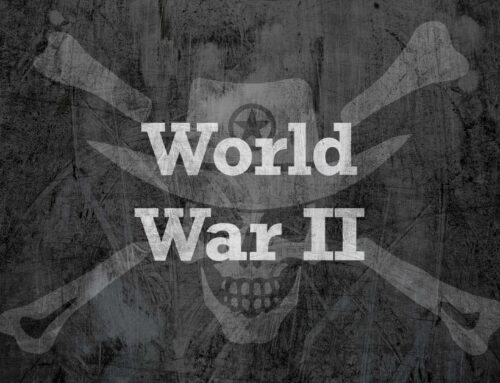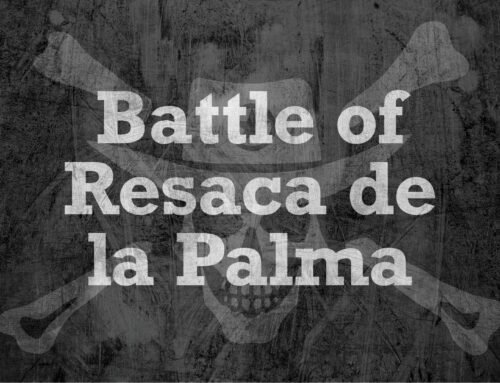The Battle of Corpus Christi: A Naval Engagement in the American Civil War (August 18, 1862)
Introduction
The Battle of Corpus Christi, fought on August 18, 1862, was a notable naval engagement during the American Civil War. This battle took place in Corpus Christi Bay, Texas, and involved Union forces attempting to enforce a blockade and Confederate forces striving to defend their strategic port city. The engagement highlighted the strategic importance of the Texas coastline and the ongoing struggle for control over vital supply routes.
Background of the Battle
Strategic Importance of Corpus Christi
Corpus Christi, located on the Texas Gulf Coast, was a crucial port city for the Confederacy. Its location provided a vital supply route for goods and military supplies, making it a strategic target for Union forces. Control over Corpus Christi was essential for both sides as it influenced the broader efforts to control the Gulf of Mexico and maintain supply lines.
Context of the Battle
In the summer of 1862, Union forces sought to tighten their blockade of Confederate ports as part of the Anaconda Plan, aimed at strangling the Confederacy’s economic resources. The Union Navy, under the command of Lieutenant John W. Kittredge, targeted Corpus Christi to disrupt Confederate supply lines and enforce the blockade. Confederate forces in the region, led by Major Alfred M. Hobby, were determined to defend the city and maintain their access to the Gulf.
Preparations and Mobilization
Union Forces and Leadership
The Union forces involved in the Battle of Corpus Christi were commanded by Lieutenant John W. Kittredge. The Union naval squadron included several gunboats, such as the USS Arthur and the USS Sachem. Kittredge’s objective was to capture or neutralize the Confederate defenses in Corpus Christi Bay and enforce the blockade.
Confederate Forces and Strategy
The Confederate defenders, led by Major Alfred M. Hobby, included a small garrison of infantry and artillery units. Hobby’s strategy involved utilizing the natural defenses of the bay and the city to repel the Union naval assault. The Confederates also employed shore batteries and improvised defenses to protect their positions.
The Day of the Battle: August 18, 1862
Initial Naval Engagement
On the morning of August 18, 1862, the Union gunboats entered Corpus Christi Bay and began their assault on the Confederate defenses. The initial engagement involved a series of artillery exchanges as the Union ships targeted Confederate shore batteries. The Union naval artillery, with its superior range and firepower, played a crucial role in the early stages of the battle.
The Confederate Defense
As the battle progressed, Major Hobby’s forces utilized the cover provided by the bay’s geography to mount a determined defense. Confederate shore batteries, positioned to cover key approaches, returned fire and attempted to disrupt the Union assault. The Confederate defenders, though outgunned, displayed remarkable resilience and determination in their efforts to protect the city.
Intensified Combat
The combat intensified as the Union gunboats closed in on the Confederate positions. The Union ships, maneuvering to avoid shore-based fire, launched a series of coordinated attacks aimed at silencing the Confederate batteries. Despite facing heavy fire, the Union forces pressed their assault, gradually weakening the Confederate defenses.
Turning the Tide
The turning point of the battle came when the Union gunboats managed to land a series of accurate hits on the Confederate shore batteries, causing significant damage and casualties. The Confederate defenses, unable to sustain the intense bombardment, began to falter. Lieutenant Kittredge, recognizing the weakening Confederate position, ordered his forces to intensify their attack.
The Aftermath of the Battle
Confederate Retreat and Casualties
Following the intense fighting, the Confederate forces were compelled to retreat from their defensive positions. The Confederate casualties included several soldiers killed and wounded during the engagement. The retreat marked a significant setback for the Confederate defenders and underscored the effectiveness of the Union naval assault.
Union Victory and Impact
The victory at Corpus Christi was a significant achievement for the Union forces. The successful naval assault and capture of key positions demonstrated the strength and capability of the Union Navy. The battle underscored the strategic importance of naval power in enforcing blockades and disrupting Confederate supply lines.
Strategic Impact
The Battle of Corpus Christi had a lasting impact on the control of the Texas Gulf Coast. The victory allowed the Union to tighten its blockade of Confederate ports and disrupt the flow of supplies. The success at Corpus Christi demonstrated the effectiveness of the Union’s Anaconda Plan and its impact on the Confederate war effort.
Legacy and Commemoration
The Battle of Corpus Christi is remembered as a key event in the naval history of the American Civil War. The bravery and determination of both Union and Confederate forces are commemorated through historical markers, reenactments, and educational programs. The battle serves as a testament to the strategic importance of the Texas coastline and the ongoing struggle for control over vital supply routes.
Legacy of the Battle of Corpus Christi
Historical Significance
The Battle of Corpus Christi holds a significant place in the history of the American Civil War. It marked a crucial engagement in the Union’s efforts to enforce a blockade and disrupt Confederate supply lines. The battle demonstrated the importance of naval power and the strategic significance of coastal cities in the broader conflict.
Cultural Impact
The legacy of the Battle of Corpus Christi is deeply ingrained in Texan and American history. The courage and resolve of the soldiers and sailors who fought are celebrated in folklore, literature, and popular culture. The battle serves as a symbol of the broader struggle for control and the enduring spirit of determination that defined the Civil War.
Modern Reflections
Today, the Battle of Corpus Christi is viewed with a sense of historical pride and reflection. It serves as a reminder of the challenges and sacrifices faced by both Union and Confederate forces. The battle’s legacy is honored through education, preservation, and public commemoration, highlighting its significance in the broader context of American history.
Conclusion
The Battle of Corpus Christi, fought on August 18, 1862, was a significant naval engagement in the American Civil War. Despite facing determined Confederate defenses, the Union forces successfully secured a decisive victory. The battle had a profound impact on the control of the Texas Gulf Coast and highlighted the strategic importance of naval power in the Civil War.
By exploring the history and impact of the Battle of Corpus Christi, we gain a deeper appreciation for the courage and determination of those who fought in the Civil War. The story of this battle underscores the importance of strategic planning, resilience, and the enduring spirit of determination that continues to define American history.





